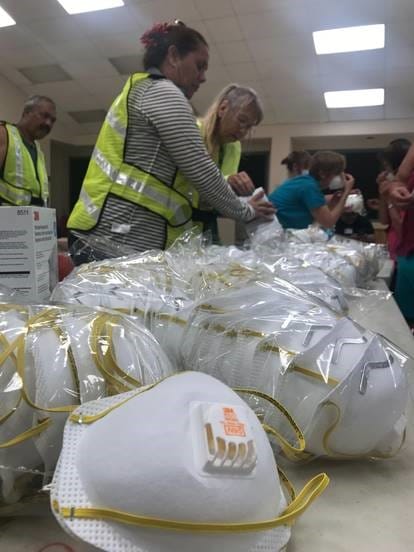PHEP Helps Keep Residents Safe during a Volcanic Eruption in Hawaii
On May 3, 2018, Kilauea volcano erupted on the island of Hawai’i – and did not stop erupting for months. The eruptions triggered earthquakes, volcanic gas, and lava fountains that spewed up to 300 feet in the air. Lava flowed onto highways, isolating towns, and more than 2,000 residents were forced to evacuate. All told, this volcanic eruption was the most destructive in the United States since Mount St. Helen in 1980.
Staff at the state health department were on alert well before the initial eruption. Three days prior, the crater of the volcano drained – a warning sign of a possibly imminent volcanic eruption. But even before that, PHEP resources enabled the health department to prepare for all-hazard events, through trainings and exercises of public health emergency response and management for public health staff and development of expertise in storing and dispensing life-saving medicines and medical supplies.
When the volcano erupted, the preparedness office coordinated department operations. PHEP-funded staff deployed public health teams to evaluate health and safety risks in shelters where affected residents were staying. They also monitored the air quality around the island and updated the public on the air quality and other vital health information through social media and a health department advisory webpage.
Through PHEP, the health department previously established and exercised point of distribution sites, or PODs, to be used to rapidly distribute medicines and other materials as needed during a disaster. During the eruption, they activated six PODS to distribute 52,000 particulate-filtering masks to residents in affected areas, helping to protect them from volcanic ash.
While no one could have stopped the volcano eruption, emergency preparedness allowed the state health department to minimize its health impacts on the community.
“Disasters are unpredictable,” said Judy Kern, PHEP director for Hawaii. “We are thankful for and rely on our PHEP funding to train our staff and fund work that builds capabilities to prepare us for all hazards, so that we can work quickly when a disaster does occur.”

On May 3, 2018, a volcano erupted on the island of Hawai’i – and did not stop erupting for months. PHEP-funded staff deployed public health teams to evaluate health and safety risks in shelters where affected residents stayed and kept the public updated on air quality through social media and a health department advisory webpage.
The Incident
On May 3, 2018, a volcano erupted on the island of Hawai’i – and did not stop erupting for months.
The Response
PHEP-funded staff deployed public health teams to evaluate health and safety risks in shelters where affected residents stayed and kept the public updated on air quality through social media and a health department advisory webpage.
The Outcomes
Thanks to preparation through PHEP, staff were also able to quickly establish six dispensing sites to distribute more than 52,000 particulate filtering masks to residents in affected areas, protecting them from volcanic ash.